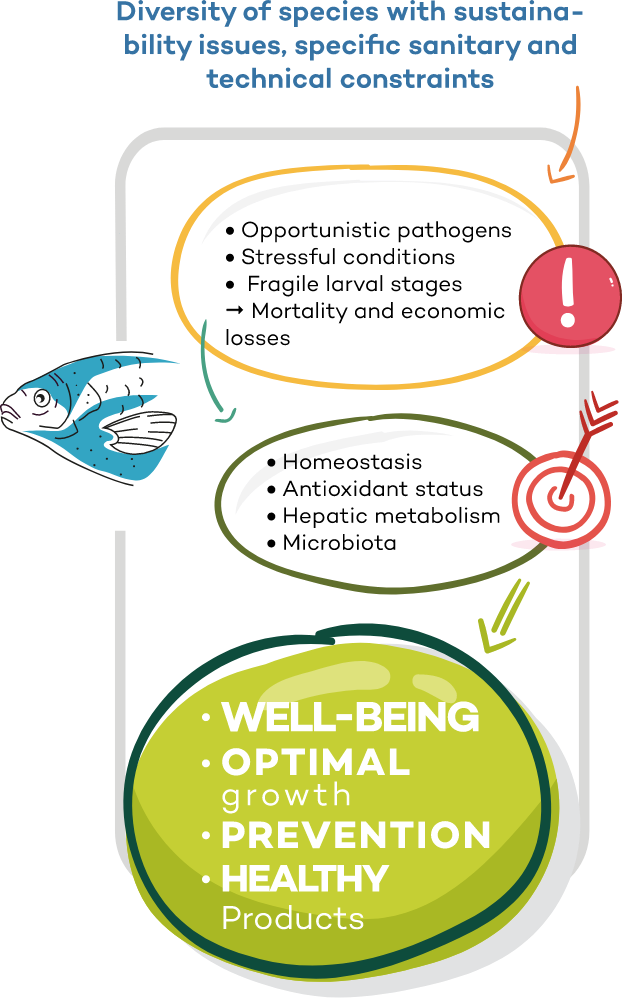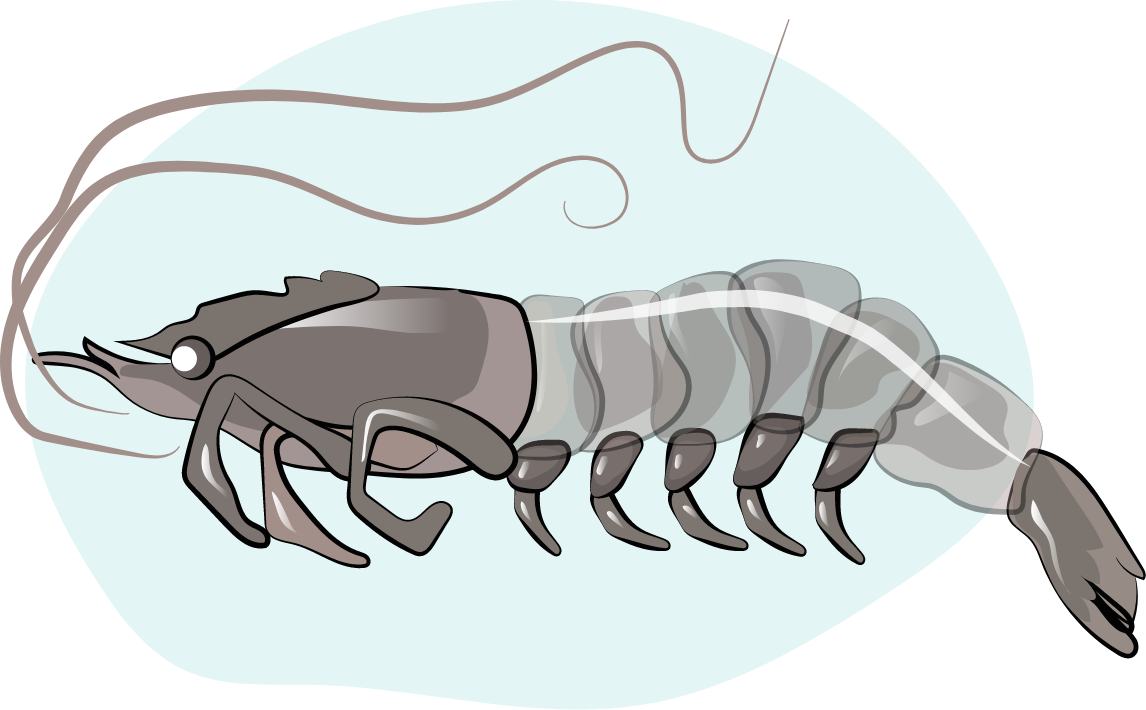Aquaculture farming
The development and intensification of aquaculture has led the sector to face many challenges to ensure its sustainability. Besides the preservation of the aquaculture environment, the search for solutions to substitute proteins of marine origin and the efficient management of biosecurity represent two other major challenges for aquaculture.
Thanks to our various collaborations with technical-scientific partners and our expertise in the valorization of active plant ingredients in aquaculture, we take into account the "One World One Health" strategy to offer natural solutions in compliance to aquaculture environments to guarantee products from healthy production for humans..

Fish


Broodstock


Shrimps

Challenges
in breeding


Digestive
Aquaculture intensification has favored the presence and spread of several pathogens from bacterial origin in fish and shrimps.
These pathogens contribute to intestinal dysbiosis through their different virulence factors.
All rearing stages are potentially at risk, with particular attention to the larval, nursery and pre-growing stages.
These pathogens of bacterial origin depend on the host species, the rearing environment and many other factors.
➜ They can cause growth delays, mortalities and increase production costs in farming.
Here are some bacteria renowned for their pathogenicity in aquaculture systems (Michel, 2018) :
- Aeromonoses (A. hydrophyla et espèces mobiles)
- Furonculose (A. salmonicida subsp. salmonicida)
- Bouche rouge ou yersiniose (Y. ruckeri)
- Maladie d’eau froide (F. psychrophylum),
- Vibriose (V. harveyi, V. anguillarum, etc.),
- AHPND/EMS (V. parahaemolyticus)
- Photobactériose (P. damselae)
- Streptococcose (S. iniae, S. agalactiae)
- Edwarsiellose des poissons chats (E. ictaluri)

Hepatic

Observation of healthy liver and that marked by the presence of nodules (unhealthy), in a fish species (Shimada et al., 2014)
➜ Thus, it is important to contribute to better functioning of the liver or hepatopancreas in order to guarantee optimal growth of fish or shrimp.
Liver (hepatopancreas in shrimp) is an organ involved in the regulation of several biological and physiological processes.
It is involved in the metabolism of nutrients (lipid) and the detoxification of certain toxic substances.
It can be influenced by exogenous factors (food, pollutants, stress, microorganisms, toxins, etc.) which are capable of altering its functioning and indirectly causing enormous economic losses.
In many species, the accumulation of lipids in hepatic or intestinal tissues can limit nutritional absorption, particularly that of fatty acids, and cause growth delays or a deterioration of finished product quality.

Parasitic
In shrimp farms, many internal parasites are responsible for significant production losses and growth delays.
Their incidence is often associated with water quality, stocking densities, food quality, pathogens, etc.
Enterocytozoon hepatopenaei (microsporidium) and some species of gregarines (protozoa) are parasites that have emerged in recent years in the shrimp industry. They are often associated with triggering the outbreak of white feces syndrome (WFD).
This pathology, sometimes associated with acute hepatopancreatic necrotic disease, is often characterized by:
- the presence of white fecal filaments floating in the water during the grow-out period;
- a decrease in feed consumption and growth, and even chronic mortalities;
- a whitish coloration of the gastrointestinal tract in shrimps.

Example of clinical signs (whitish digestive tract) observed in P. vannamei shrimp, with WFD (Sriurairatana et al., 2014 & Caro et al., 2020)
➜ Although biosecurity remains important for the management of this disease, strategies to reduce the prevalence of these pathogens in the fish body are also important.

Metabolism
Fish and shrimp have a particular metabolism influenced by many environmental factors (physico-chemistry of the water), the stage of development (the former being more fragile), etc.
In addition, the relatively high content of Omega-3 in the flesh of fish makes it more sensitive to oxidative stress with damage to lipid membranes and a weakening of its immune system.
Moreover, in shrimp, the immune system is essentially based on the innate and not the adaptive.
➜ The support of aquatic animal metabolism, thanks to botanical compounds, contributes to an improvement of the immune and antioxidant responses in order to guarantee better survival and health of farmed organisms.

